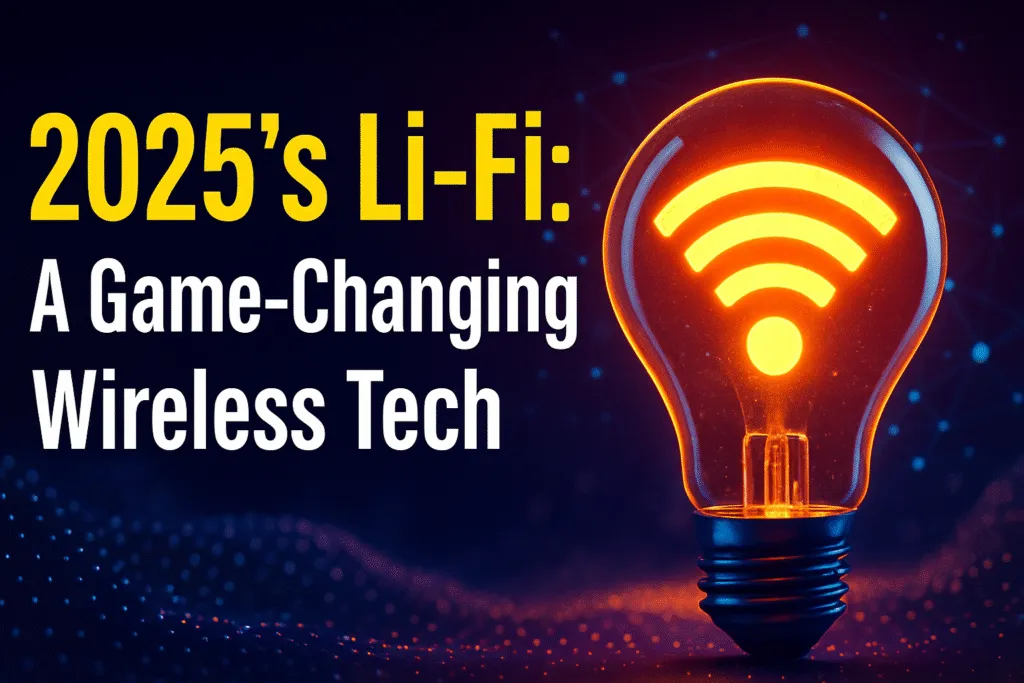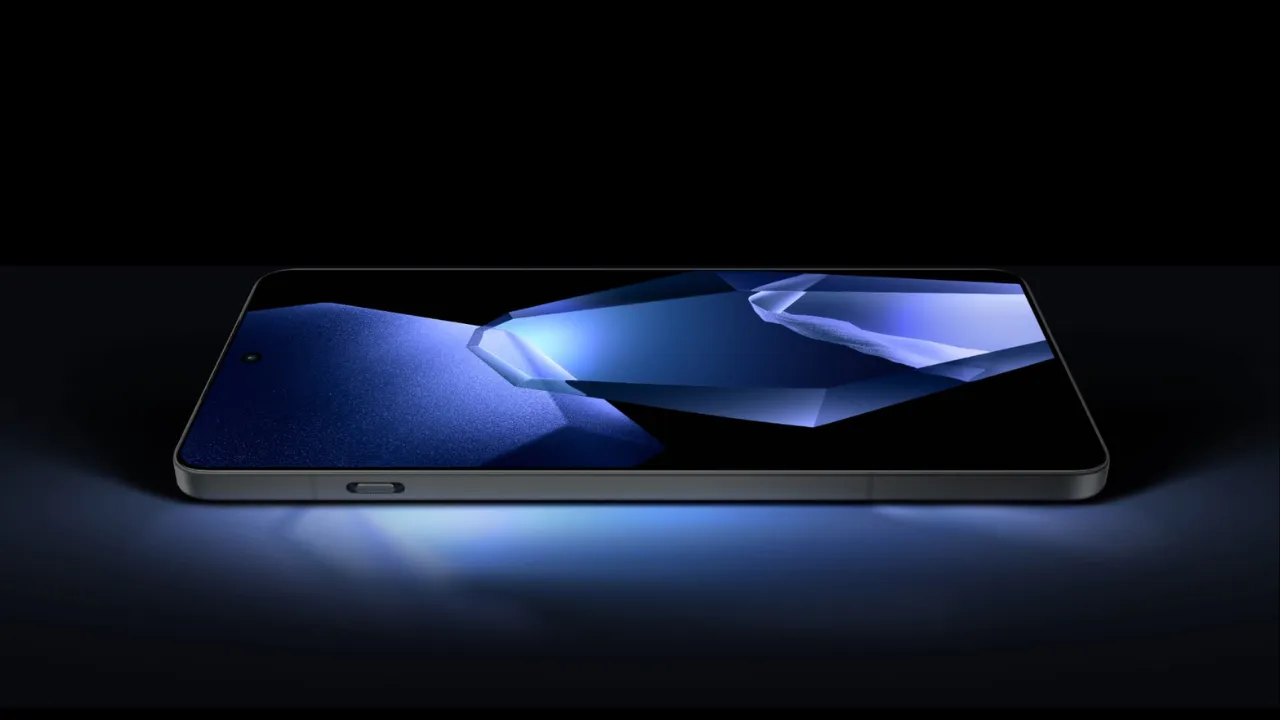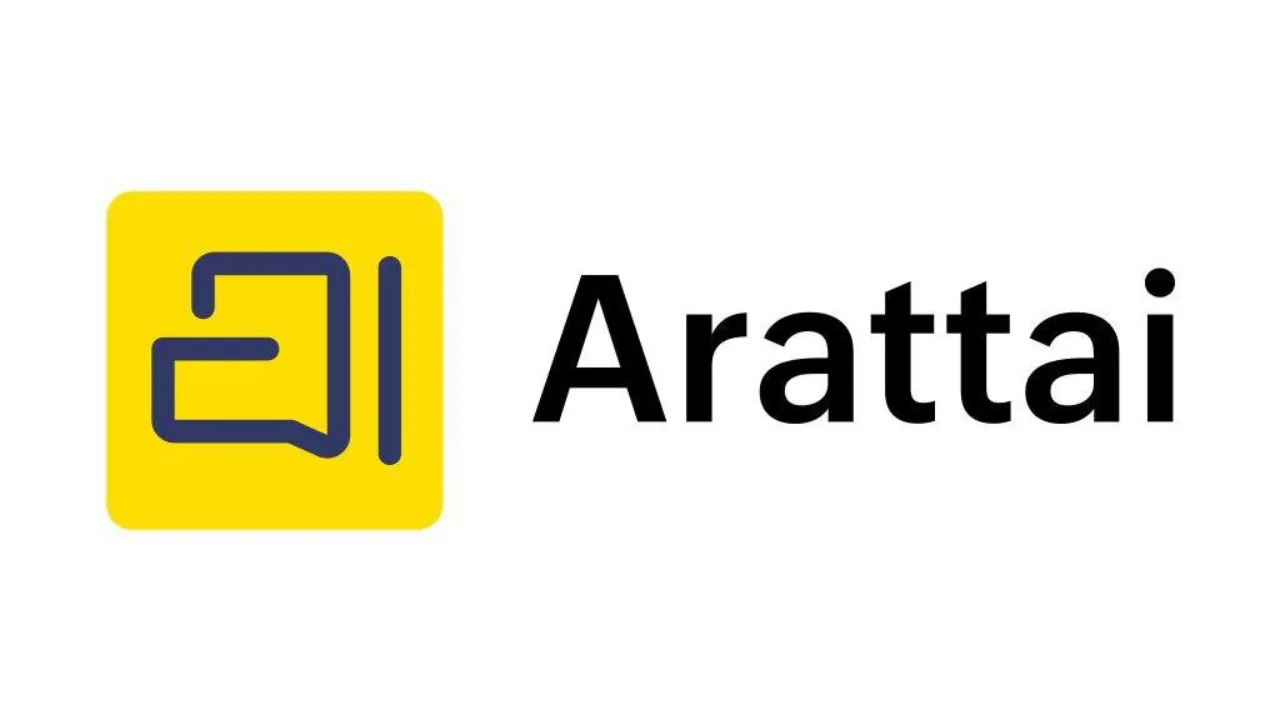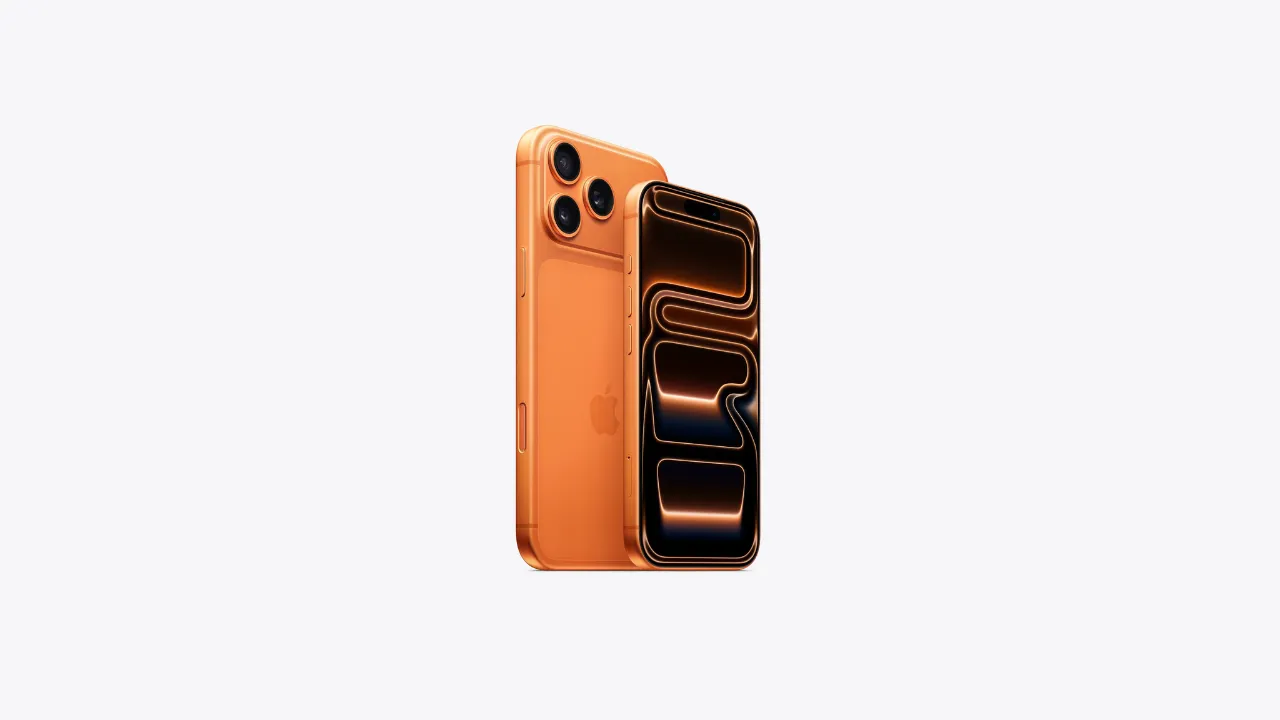Introduction
Li-Fi is emerging as a revolutionary technology in the world of wireless communication. As a tech blogger, I’ve observed how internet connectivity has evolved from slow dial-up days to blazing-fast fiber and now toward futuristic solutions like Li-Fi. Unlike traditional Wi-Fi, which uses radio waves, Li-Fi transmits data through visible light. This one change in medium unlocks new possibilities in terms of speed, security, and efficiency.
What makes Li-Fi truly exciting is its simplicity. It uses LED light bulbs—common in homes and offices—to send data through light signals. These signals are so fast that they’re invisible to the human eye but easily picked up by a receiver. This means wherever there’s light, there can be internet access.
With our increasing need for faster and interference-free connectivity, Li-Fi holds great promise. From hospitals and aircraft cabins to underwater research labs, the scope of Li-Fi is expanding rapidly. While it’s not meant to replace Wi-Fi entirely just yet, it offers a complementary solution that can work in places where radio frequencies struggle.
In this blog, we’ll explore what Li-Fi is, how it works, its advantages and limitations, and what the future holds for this groundbreaking technology.
What is Li-Fi?
Li-Fi, short for Light Fidelity, is a wireless communication technology that uses visible light to transmit data. It was introduced as an alternative to traditional Wi-Fi, which relies on radio waves. In simple terms, Li-Fi enables data transmission through the light emitted by LED bulbs. These light signals are modulated at extremely high speeds—so fast that the human eye can’t detect the flicker—allowing them to carry digital information without affecting the room’s lighting.
The core idea behind Li-Fi is to use the already available lighting infrastructure for internet access. When an LED bulb fitted with a Li-Fi transmitter is turned on, it can send data to nearby devices equipped with a compatible receiver. This data transfer happens in real time and with very low latency, making it suitable for high-speed internet, video streaming, and even real-time communication.
One of the key benefits of Li-Fi is that it offers incredibly high bandwidth, far beyond what current Wi-Fi systems provide. Since it operates in the visible light spectrum, it avoids the limitations of radio frequency congestion, making it more secure and interference-free.
Li-Fi is still in the development phase and not yet widely adopted in consumer devices, but its potential is undeniable. As smart homes, smart cities, and connected devices become more common, Li-Fi could play a crucial role in delivering fast, efficient, and secure internet access using something as simple as light. Li-Fi, short for Light Fidelity, is a wireless communication technology that uses visible light to transmit data. You can learn more about Li-Fi technology on Wikipedia.
How Li-Fi Works
Li-Fi works by using visible light from LED bulbs to transmit data wirelessly. At its core, it’s a form of optical communication, where data is encoded into light signals that are then received and decoded by compatible devices. The process starts when an LED light source, equipped with a Li-Fi transmitter, modulates its light intensity at extremely high speeds. These changes are too fast for the human eye to detect but can be interpreted as binary data (0s and 1s) by a Li-Fi receiver.
The receiver, usually a photodiode or light sensor in a smartphone, laptop, or a dedicated device, picks up these light fluctuations and converts them back into electrical signals—essentially reversing the process to recreate the original data. This allows for high-speed communication between the LED source and the receiving device, all through light.
One of the most important aspects of how Li-Fi works is its dependence on line-of-sight. Unlike Wi-Fi, light can’t pass through walls, which limits the signal to the room where the light source is located. However, this also enhances security, as the data can’t be accessed from outside the physical space.
Li-Fi’s performance is heavily influenced by the quality and intensity of the light source. It doesn’t work in complete darkness unless infrared LEDs are used. Additionally, ambient light sources don’t interfere with Li-Fi, thanks to advanced filtering and modulation techniques.
In short, Li-Fi technology turns ordinary LED bulbs into high-speed data transmitters, offering a powerful and efficient alternative to traditional wireless systems. As LED lighting continues to become more widespread, the infrastructure needed for Li-Fi is already taking shape—bringing us closer to a light-powered internet revolution.
Li-Fi vs Wi-Fi
Li-Fi and Wi-Fi are both wireless communication technologies, but they operate on entirely different principles. Wi-Fi uses radio waves to transmit data, while Li-Fi uses visible light through LED bulbs. This core difference leads to several key variations in performance, range, and use cases.
In terms of speed, Li-Fi has the potential to offer data transfer rates exceeding 100 Gbps under ideal conditions, which is significantly faster than most Wi-Fi networks. Since light waves can carry more data than radio waves, Li-Fi opens up the possibility for ultra-high-speed internet in environments that demand it.
Security is another major advantage of Li-Fi. Because light cannot pass through walls, Li-Fi signals are contained within a physical space, reducing the risk of external hacking or unauthorized access. On the other hand, Wi-Fi signals can be accessed from nearby rooms or even outside buildings, making them more vulnerable.
When it comes to interference, Li-Fi is also superior. Radio frequencies used in Wi-Fi can suffer from congestion and signal loss, especially in crowded areas. Li-Fi, operating on the light spectrum, doesn’t interfere with other signals, making it ideal for places like hospitals, airplanes, or industrial zones.
However, range and mobility are where Wi-Fi has the upper hand. Wi-Fi can cover entire buildings and works through walls, while Li-Fi requires a direct or reflected light path. If the light is blocked, the signal is lost. This makes Li-Fi more suitable for fixed environments than mobile usage.
In conclusion, both Li-Fi and Wi-Fi have their strengths. Li-Fi excels in speed, security, and interference-free performance, while Wi-Fi remains more practical for general use due to its range and flexibility. Together, they could complement each other in the future of wireless communication.
Advantages of Li-Fi
Li-Fi offers several unique advantages that make it a promising technology for the future of wireless communication. One of the biggest benefits of Li-Fi is speed. Because it uses light waves, which have a much higher frequency than radio waves, Li-Fi can deliver data at lightning-fast rates—potentially reaching over 100 Gbps in lab conditions. This makes it ideal for high-bandwidth activities like 4K streaming, large file transfers, and real-time cloud access.
Another key advantage is security. Since light can’t pass through walls, Li-Fi signals remain confined to the physical space they’re used in. This makes unauthorized access much more difficult, providing a natural layer of protection against cyberattacks or data leaks—especially in sensitive environments like hospitals, research labs, or defense facilities.
Li-Fi also excels in interference-free communication. Unlike Wi-Fi, which shares the crowded radio frequency spectrum with various other devices, Li-Fi uses the visible light spectrum, which is unregulated and far less congested. This makes Li-Fi ideal for environments where radio frequencies either interfere with equipment or are restricted.
The technology is also energy-efficient. LED bulbs used for lighting can simultaneously transmit data without consuming extra power, reducing the need for separate internet infrastructure. This dual functionality supports eco-friendly smart building systems.
Finally, Li-Fi opens up opportunities in places where Wi-Fi struggles—like underwater, inside aircraft cabins, or in areas with high electromagnetic interference. As LED lighting becomes more widespread, Li-Fi can piggyback on existing infrastructure, making implementation easier and more cost-effective.
Overall, Li-Fi offers a blend of high speed, enhanced security, low interference, and energy efficiency—making it a strong contender in the evolution of wireless technology.
Limitations of Li-Fi
While Li-Fi holds great promise as a next-generation wireless technology, it also comes with several limitations that currently prevent it from replacing Wi-Fi in everyday use. One of the most significant drawbacks is its line-of-sight requirement. Since Li-Fi uses visible light to transmit data, the connection is easily blocked by physical objects like walls, furniture, or even a person moving in front of the light source. This means the signal cannot travel through walls, limiting its coverage area to one room.
Another limitation is dependency on light. Li-Fi only works when the LED light is turned on, and although it can be dimmed to near-invisible levels, the connection still depends on an active light source. In complete darkness or when the light is switched off, Li-Fi stops functioning—unless special infrared LEDs are used, which increases complexity and cost.
Mobility and flexibility are also challenges. Unlike Wi-Fi, which allows devices to remain connected while moving across rooms or floors, Li-Fi requires the device to stay within the illuminated area. This reduces its practicality for mobile users or larger, multi-room environments.
There’s also a lack of standardization and infrastructure. Li-Fi technology is still in its early stages, and most consumer devices do not come with built-in Li-Fi receivers. This limits adoption and requires additional hardware for both transmission and reception.
Lastly, outdoor usage is problematic. Sunlight and other strong light sources can interfere with the signal, making it less reliable in open or brightly lit environments.
In summary, while Li-Fi offers high speed and security, its reliance on line-of-sight, limited range, and lack of current device compatibility are hurdles that need to be addressed before it can become a mainstream solution.
Applications of Li-Fi
Li-Fi technology has a wide range of applications, especially in environments where traditional wireless systems face challenges. One of the most promising uses of Li-Fi is in hospitals, where radio frequency signals from Wi-Fi can interfere with sensitive medical equipment. Since Li-Fi uses light waves, it provides a safe and high-speed communication option for transmitting patient data and enabling smart medical devices.
Another key area is air travel. In-flight Wi-Fi is often slow and unreliable due to signal restrictions and bandwidth limitations. Li-Fi can provide passengers with faster and more secure internet access without interfering with aircraft navigation systems. The LED cabin lights already installed in planes can double as data transmitters, making integration easier.
Underwater communication is another field where Li-Fi shines. Radio waves don’t travel well in water, but light waves can. This makes Li-Fi ideal for underwater exploration, submarine communication, and marine data collection where real-time connectivity is needed.
In smart homes and offices, Li-Fi can turn LED lights into internet hotspots. This can help reduce radio congestion, offer more secure connections, and deliver high-speed data in confined indoor environments. With the growth of IoT devices, Li-Fi can support seamless communication among appliances and systems within a local area.
Li-Fi is also useful in industrial environments where electromagnetic interference is common, such as power plants or factories. Since it doesn’t rely on radio waves, it can safely transmit data without disrupting heavy machinery or automated systems.
In education and museums, Li-Fi can offer location-based content delivery. For example, when a student or visitor is under a specific light, their device can receive relevant information or interactive material instantly.
These practical use cases show that Li-Fi has the potential to enhance communication in places where Wi-Fi struggles, making it a valuable addition to the future of wireless technology.
Li-Fi in India
Li-Fi technology in India is still in its early stages but is steadily gaining attention through pilot projects, startup innovations, and government-supported initiatives. One of the most notable examples is its use in rural areas, where traditional internet infrastructure is either too expensive or difficult to deploy. In some villages of Gujarat, Li-Fi has been successfully tested to deliver high-speed internet using existing LED lighting, turning remote locations into smart digital hubs.
Startups like Nav Wireless Technologies are leading the way in implementing Li-Fi in Indian conditions. They have demonstrated that Li-Fi can provide reliable connectivity in places where radio frequencies struggle due to interference or infrastructure limitations. Their Li-Fi-based solutions have been used in schools, hospitals, and government offices—delivering both lighting and internet access through a single system.
In the defense sector, Li-Fi is being explored as a secure communication method for the Indian Navy. Since light-based signals don’t radiate beyond physical boundaries, they are ideal for maintaining privacy and avoiding data leaks in sensitive operations. Some Delhi-based tech companies are also developing Li-Fi communication tools for submarines and naval ships where conventional wireless methods fail.
Academic institutions like IITs and private universities are also researching Li-Fi for medical, industrial, and educational use. These efforts focus on enhancing the technology’s reliability, increasing data rates, and creating cost-effective solutions suited for India’s diverse environments.
With growing interest under initiatives like Digital India and Smart Cities, Li-Fi could soon become a key component in the country’s communication ecosystem. Although mass adoption will take time due to infrastructure and device limitations, India is positioning itself as a serious player in the future of Li-Fi technology.
Future of Li-Fi
The future of Li-Fi looks incredibly promising as the demand for faster, more secure, and interference-free wireless communication continues to grow. With increasing digital consumption, the current radio frequency spectrum used by Wi-Fi is becoming congested. Li-Fi, which operates on the visible light spectrum, offers a vast and untapped bandwidth that can support ultra-fast internet in data-heavy environments.
As smart homes, connected cars, and IoT devices become more mainstream, Li-Fi can serve as a reliable backbone for communication. Since it uses LED lights, which are already common in homes, offices, and public spaces, the infrastructure needed for Li-Fi is already taking shape. With minor upgrades, these lights can double as data transmitters, offering a low-cost and energy-efficient alternative to traditional systems.
In the coming years, we can expect Li-Fi to be integrated into mobile devices, laptops, and smart gadgets, enabling seamless switching between Wi-Fi and Li-Fi based on speed and coverage. Industries such as healthcare, aviation, defense, and underwater exploration are likely to adopt Li-Fi for its speed and security advantages. Hospitals can use it without risking interference with medical equipment, while aircrafts and submarines can benefit from its electromagnetic immunity.
Governments and telecom providers around the world, including India, are also exploring Li-Fi for rural connectivity and smart city projects. As research continues and standardization improves, we may see global collaboration to create unified protocols for Li-Fi communication.
Although challenges like limited range and line-of-sight requirements still exist, technological advancements are expected to overcome these barriers. With continued innovation and investment, Li-Fi is on track to become a powerful companion to Wi-Fi—potentially transforming how we experience wireless internet in the near future.
Conclusion
Li-Fi is not just a futuristic concept—it’s a practical and powerful alternative to traditional wireless communication. By using visible light instead of radio waves, Li-Fi offers unmatched speed, enhanced security, and freedom from electromagnetic interference. From hospitals and airplanes to underwater communication and smart cities, its potential applications are vast and impactful.
While Li-Fi is still evolving and not yet ready to fully replace Wi-Fi, it is rapidly gaining momentum in research labs, pilot projects, and even government-backed initiatives in countries like India. With the rise of smart devices and the growing need for high-speed, reliable internet, Li-Fi could soon play a crucial role in transforming how we connect and communicate.
As technology advances and integration becomes easier, Li-Fi and Wi-Fi may work hand-in-hand—creating a hybrid system that ensures faster, safer, and more efficient connectivity everywhere. The light-powered internet revolution is just beginning, and Li-Fi is leading the way.
Also Read: Ultimate Guide: How to Build a Personal Website in 2025
FAQs on Li-Fi
Q1. What is Li-Fi and how is it different from Wi-Fi?
Li-Fi (Light Fidelity) is a wireless communication technology that uses visible light from LED bulbs to transmit data. Unlike Wi-Fi, which relies on radio waves, Li-Fi uses light waves, offering higher speeds and better security within limited spaces.
Q2. Is Li-Fi faster than Wi-Fi?
Yes, in ideal conditions, Li-Fi can be much faster than Wi-Fi. Laboratory tests have shown Li-Fi reaching speeds over 100 Gbps, whereas typical Wi-Fi networks offer far lower speeds.
Q3. Can Li-Fi work in the dark?
Li-Fi depends on visible or infrared light. In complete darkness, Li-Fi won’t work unless infrared LEDs are used. It needs a light source to function.
Q4. Does Li-Fi work through walls?
No, Li-Fi signals cannot pass through walls or opaque objects. This limitation increases security but reduces range and flexibility compared to Wi-Fi.
Q5. Where is Li-Fi used in real life?
Li-Fi is being tested in hospitals, airplanes, underwater systems, and rural areas. It is also used in research labs and pilot projects in countries like India for secure and high-speed internet access.
Q6. Is Li-Fi available for home use?
As of now, Li-Fi is not widely available in commercial home devices. However, companies are developing Li-Fi-compatible routers and receivers for future consumer use.
Q7. Can Li-Fi and Wi-Fi work together?
Yes, in the future, Li-Fi and Wi-Fi are expected to work in tandem, switching intelligently based on user needs, device location, and data demand.
Q8. What are the main advantages of Li-Fi?
Li-Fi offers ultra-fast data transfer, enhanced security, no electromagnetic interference, and energy efficiency by using existing LED lights for dual purposes.
Q9. What are the limitations of Li-Fi?
It requires line-of-sight, doesn’t work through walls, needs the light to be on, and lacks standard infrastructure in most consumer devices today.
Q10. Is India adopting Li-Fi technology?
Yes, India has started adopting Li-Fi through pilot projects in rural areas and defense applications. Startups and research institutions are actively working on making it mainstream.













